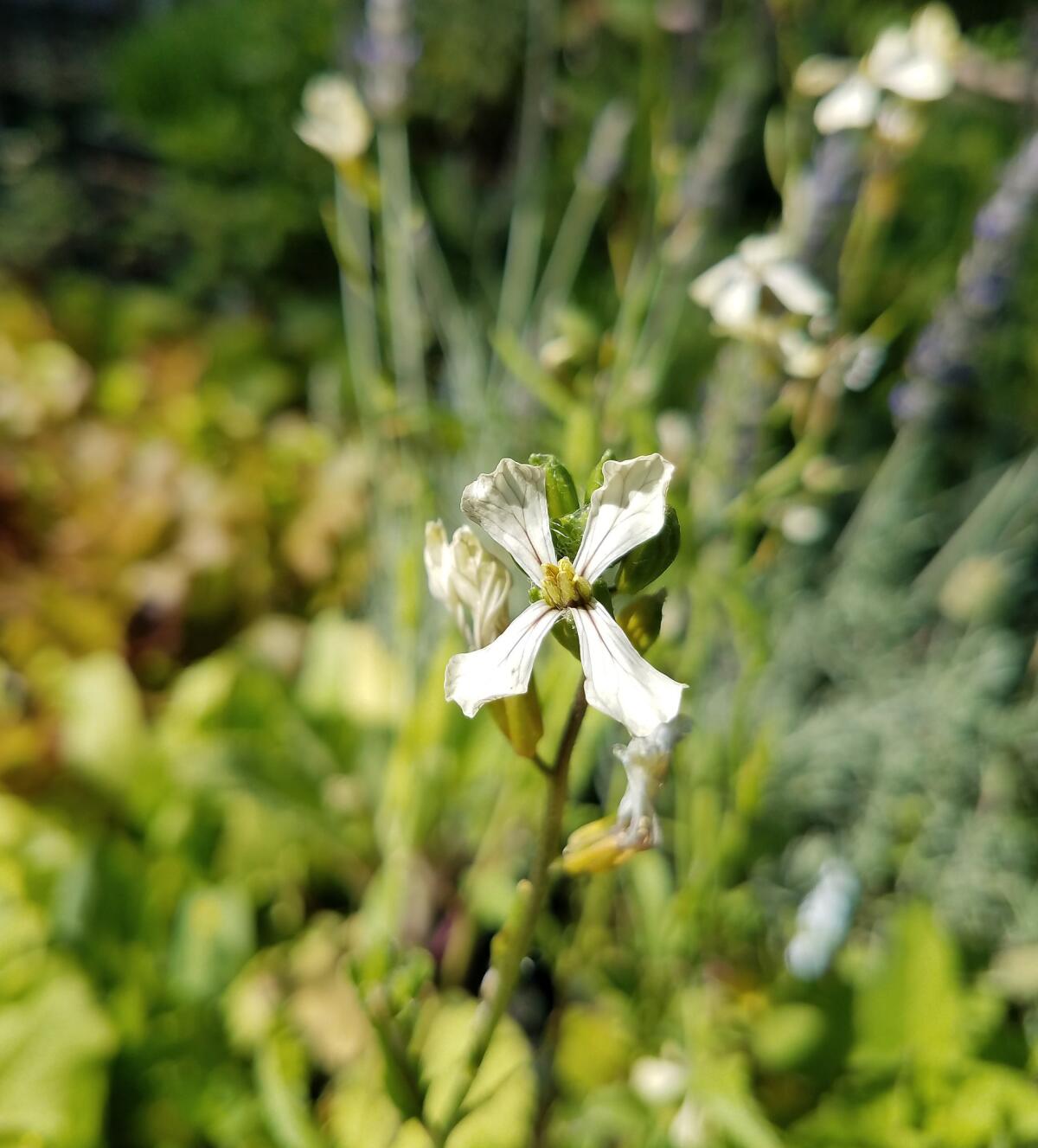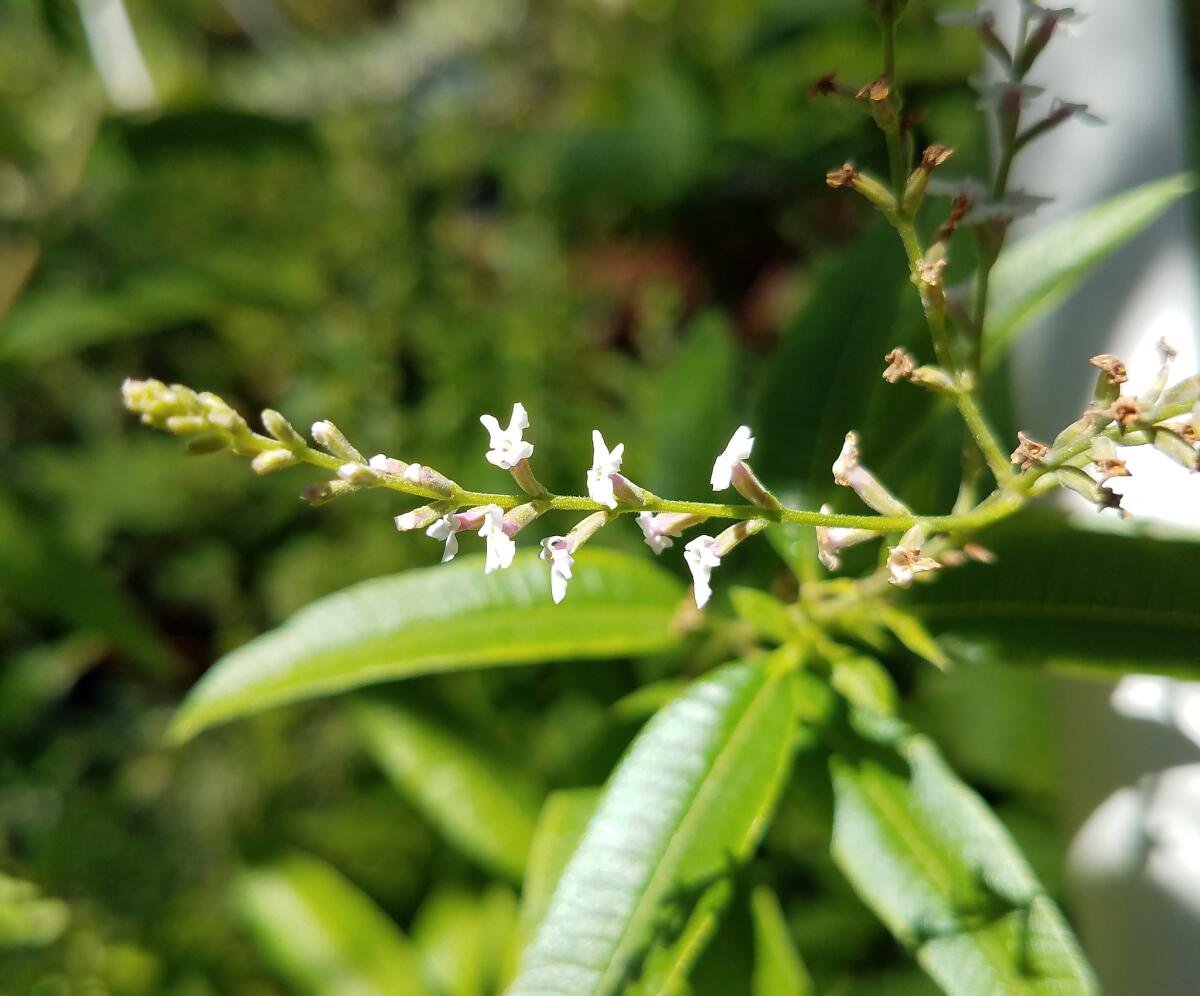6 edible flowers that make a lovely, tasty treat for your spring garden
With their abundant colors and diversity of shapes, flowers are a buoyant feast for the eyes, and often our noses as well, with their varied perfumes.
But many flowers aren’t just pretty. They pack a punch for the palate too, with flavors that are surprisingly intense and addicting. They might make a tasty addition to your spring garden.
Some edible flowers are from vegetable plants, like summer squash blossoms, which can be stuffed with cheese, rolled up and quickly sauteed in butter, and they’re just delicious, says Tom Yost of Carol Gardens in Riverside, a grower of organic herbs and vegetables.
But Yost’s favorite edible flowers are from herbs, with subtler or deeper flavors than the stems and leaves.
Herbs are relatively easy to grow. They don’t need super nutrients in their soil or tons of water, Yost said, and they can thrive in containers or the ground.
“They’re not picky about their soil,” he said, “but if you have a clay soil or decomposed granite, they can get stressed during the super-hot months, so compost or mulch can help.”
As anyone who’s grown basil knows, the herbs will start to flower unless you cut them back regularly. That’s what makes them good companion plants in the vegetable garden, because the flowers attract all kinds of beneficial pollinating insects. (And a bonus: When you’re working in the garden, their fragrance is a little gift when you brush against them.)
Herbs like at least six to seven hours a day of full sun — too much shade and they’ll get leggy and spindly — but they’re also very hardy, Yost said.
“Right now, we have a mass of flowering arugula that’s about 3 feet tall and 5 feet wide. It went through the freeze and frost and finally fell over during these last heavy rains,” Yost said. “But my wife, Linda, won’t let me cut it back because she loves snacking on the flowers.”
Linda Yost is the chef in the family, and frequently incorporates flowers into her meals. Here are six of the Yosts’ favorite edible flowers:

Anise hyssop is a humble herb with a lovely violet flower that offers a gentler version of the plant’s strong anise/licorice flavor. Yost recommends pulling off the little flowerettes and sprinkling them in salads. “It’s very subtle, so you’re not getting a big flash of licorice,” he said. The flowers are also a nice addition to desserts or to expand the sensory experience of a drink. “Use it as a garnish on top, so what you do is sip and smell.”

Lavender is a key ingredient in herbs de Provence, the dried mixture of herbs that imparts that distinctive “je ne sais quoi” quality to the cuisine of the South of France, but the tiny fragrance-packed buds also add flavor to a variety of dishes, from lavender ice cream (here’s a recipe from the now-closed Laurel Restaurant in San Diego) to meat rubs to jasmine rice, said Linda Yost. “I sprinkle in four or five little flowers at the start of cooking, and it just makes the flavor pop.” Be sparing, Yost said, because too much makes food taste soapy, and he recommends using only certain varieties for eating — basically the French varieties of Grosso, Munstead and De Provence.

Arugula flowers are a little homely, but if you’re a fan of this peppery green, the flowers have a taste that’s absolutely addictive — nutty with a more subtle flavor of pepper and spice. “They’re good for people with nut allergies, because they give you that nutty tannin flavor without the allergic reaction,” Yost said. Add them to salads or as toppings to ice cream or yogurt, or just eat them straight as a snack. “They pair well with sweet dishes, mixing savory with sweet, like chocolate and pretzels.”

Borage is another pedestrian-looking plant that creates eye-popping, otherworldly flowers, all the more remarkable because, of all things, they taste like cucumbers. The leaves and stems have that flavor too, but they also have little hairs that make eating unpleasant. The flowers, on the other hand, are smooth and lovely to behold in salads. “Linda likes to put them in ice cube trays, cover them with water and freeze them,” Yost said. “They make great flavored waters.”

Lemon verbena is a boring-looking plant until you brush against its leaves and the smell of lemon nearly knocks you out. The flowers are tiny but pack a wallop. “They’re the only plants you can add to water without boiling and get an intense flavor,” Yost said. The flowers make great flavored water and ice cubes, he said, are they’re delicious in ice cream. “I put crushed flowers and leaves in heavy cream, bring it to a simmer for just 10 minutes and then let it cool and strain the leaves out,” said Linda Yost. “That’s how strong it is.”

Nepitella, also known as lesser calamint, is an essential herb in Italian cooking but little known in the United States. Yost discovered it a few years ago, when the owner of Riverside’s popular Mario’s Place restaurant asked if he had any to sell. Now it’s one of his most popular plants, he said, and usually sells out every year. It looks like a large-leafed oregano, “but when you eat it, it rolls across your palate four beautiful flavors—savory, thyme, oregano and mint,” he said. “Oregano has a strong peppery finish, but nepitella ends in mint.” The deep-throated violet flowers are an excellent garnish on meats, pasta and sauces, and add a savory minty punch to drinks.
